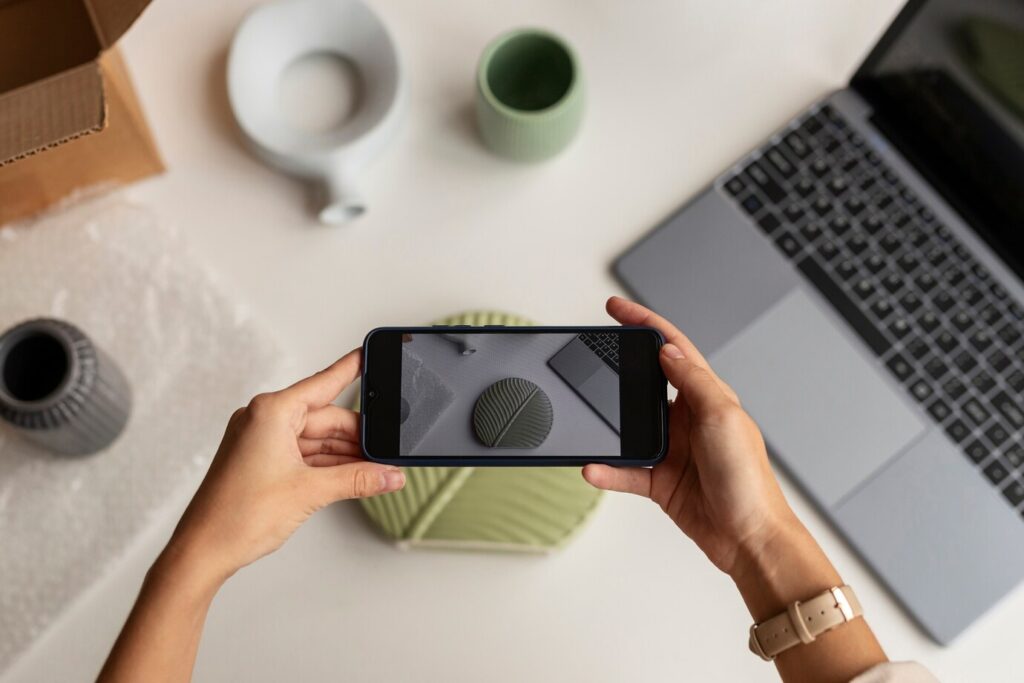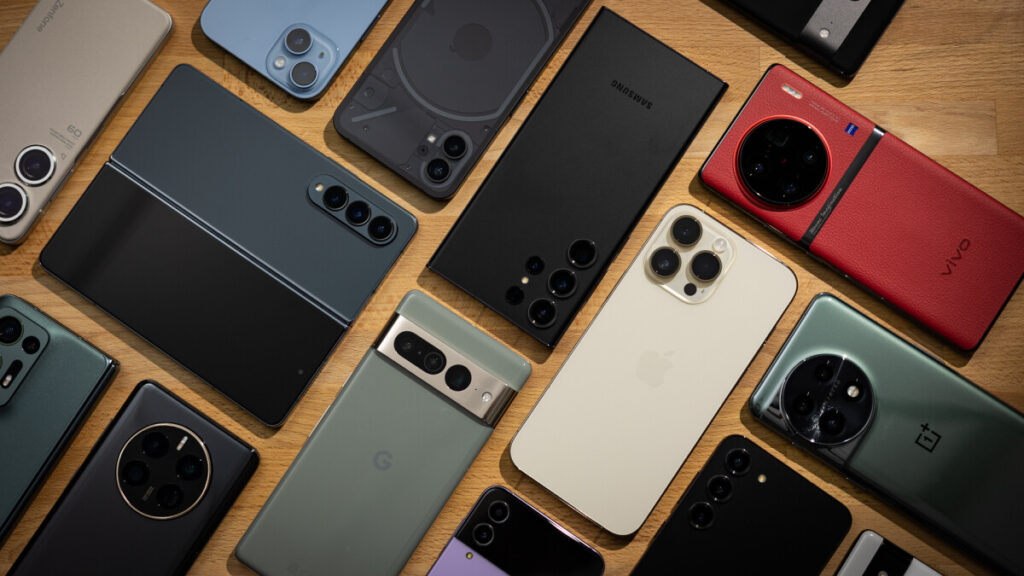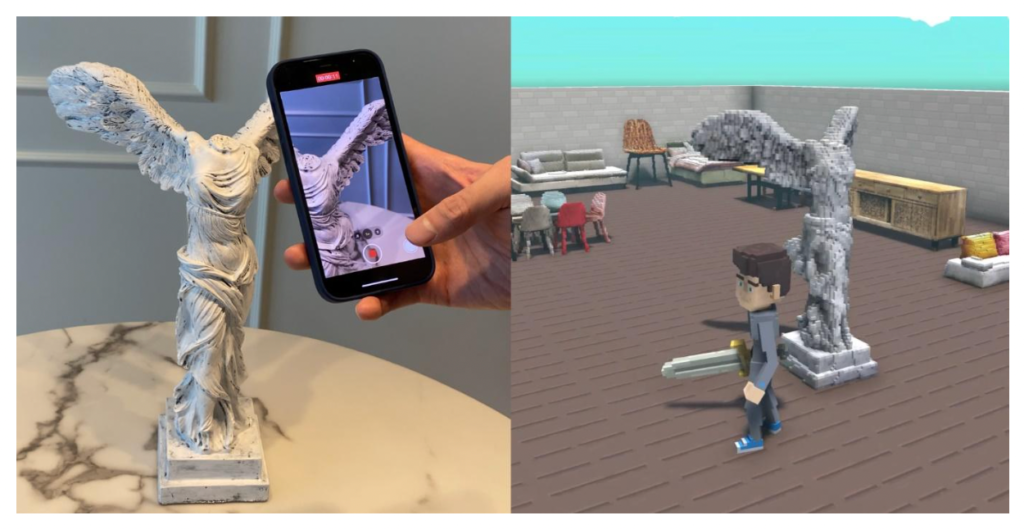Table of Contents
Introduction
With each passing day, 3D Modeling Guide techniques are becoming increasingly significant in the digital realm. Whether it’s designing for 3D printing, crafting content for video games, or just dabbling in amateur 3D modeling, three-dimensional imagery is seamlessly integrating into our daily routines.

While previously, crafting a high-quality 3D model necessitated a professional and expensive setup, times have shifted. The smartphone, a device most of us carry in our pockets, is transitioning into a potent tool for modeling. Why plunge into pricey setups when you can develop 3D models directly on your mobile device? This approach isn’t only economical but also offers the flexibility to work on projects from virtually anywhere at any time. This article, your Smartphone 3D Scanning Tutorial, will elucidate this process in a step-by-step manner.
Basic technologies and working principles
Photogrammetry stands at the forefront when discussing 3D model creation via smartphones. This method translates 2D images into 3D models. Simplified, photogrammetry examines multiple photographs of a single subject taken from varied angles to replicate its three-dimensional form.
Your smartphone’s camera quality is pivotal in this endeavor. Superior resolution and optics translate to a more detailed and accurate 3D model. Modern-day smartphones boast camera capabilities that can easily rival professional gear, making them prime candidates for photogrammetry.
The fundamental premise behind How to Create 3D Models from 2D images is capturing an object from diverse viewpoints. Modeling applications scrutinize the variances between these snapshots to deduce the object’s spatial orientation. A compilation of these photographs yields a comprehensive 3D model ready for refinement and diverse application use.
Equipment and software required
Creating 3D models is not solely about expertise but also about employing the right tech tools. While several contemporary smartphones fit the bill, some are particularly tailored for this role.
Noteworthy smartphones, optimized for 3D modeling, encompass the iPhone with its premium camera and robust image processing. Additionally, models like the Samsung Galaxy and Google Pixel, with their avant-garde photography modules, are also contenders.

Software-wise, numerous apps facilitate 3D model crafting on smartphones. A leader in this domain is Artec 3D, renowned for its intuitive photogrammetry tools. Other notable mentions include Qlone and 3D Scanner App, both brimming with user-friendly attributes for efficient, high-quality modeling.
Your smartphone and software selection largely pivot on individual requirements and budget. However, the camera’s quality and app functionality are instrumental in achieving optimal outcomes.
Preparing to create a model
Before diving into 3D model creation, proper groundwork is imperative.
Choosing a modeling subject is foundational. Objects with pronounced and discernible features are ideal, whereas overly smooth or monotonous items might complicate the modeling venture.
Ambient conditions and lighting setups are also cardinal. Natural, uniform lighting, devoid of shadows, is the gold standard. For indoor shoots, ascertain uniform illumination from all directions.
When photographing:
- Cover the entire 360-degree arc around the subject.
- Opt for contrasting backgrounds to assist the app in discerning object boundaries.
- Maintain consistent lighting across all shots.

Such meticulous preparation paves the way for an effortless modeling procedure and guarantees a top-tier final 3D model.
Creating a 3D model step by step
3D model crafting on a smartphone mandates precision at every phase.
Capturing images
- Embrace diverse angles. The more varied the photographs, the richer the data for the software.
- Steer clear of blurs. Engage stabilization, and ensure a steady hand.
- Aim for homogeneous lighting to sidestep pronounced shadows or glaring light zones that can muddle the modeling process.
Uploading images to the app
After your photoshoot, it’s time for app integration. A majority of apps feature an “import images” function, allowing you to cherry-pick the desired shots from your gallery.
Processing and 3D model creation
Post-upload, the app delves into analysis. It juxtaposes the photographs, determines the object’s spatial orientation, and molds it into a 3D avatar. This phase’s duration can vary, contingent on the object’s intricacy and image quality.
Edit and optimize the model
Upon 3D model genesis, you might want to fine-tune some facets. Apps usually proffer tools for tweaks such as detail omission, surface smoothing, or texture augmentation.
While smartphone-based 3D modeling offers remarkable convenience and is an excellent starting point, there are scenarios where the precision and capabilities of a dedicated 3D scanner are indispensable. Especially for professional applications or intricate objects, a dedicated scanner can capture minute details with greater depth accuracy. It’s essential to understand that as wonderful as smartphone scanning is, it has its boundaries. If you’re aiming for high-end professional results or need to model complex subjects with utmost accuracy, investing in a specialized 3D scanner might be the way to go.
Exporting and using the model
With your 3D model at the ready, exportation and subsequent utilization are up next.
How to export a model from an app
Most 3D modeling smartphone apps support diverse export formats like OBJ, STL, or FBX. For model exportation, venture into the “File” or “Export” segment (contingent on app design) and nominate your format of choice.
Using a 3D model
3D models have multifarious applications:
- 3D printing: Replicate your model into tangible objects, be they prototypes, ornaments, or functional parts.
- AR/VR: Breathe life into your 3D models in augmented or virtual realms, creating immersive user experiences.
- Video Games: Developers can infuse these models into gaming universes, introducing unique entities or avatars.

Common problems and solutions
3D model crafting via smartphones, while convenient, isn’t devoid of potential pitfalls.
Issues & Solutions
- Gaps or incomplete renderings: Possibly due to inadequate photos or inconsistent lighting.
Solution: Ensure extensive photography from myriad angles under proper illumination. - Subpar model detail: Might stem from using a mediocre smartphone camera.
Solution: Opt for a superior smartphone or resort to software for detail enhancement. - Model distortions: Background noise or an excessively reflective object might be the culprits.
Solution: A monochromatic backdrop and non-reflective subjects are advisable.
Conclusion
Smartphone-based 3D modeling is an epitome of efficiency and economic viability. As we peer into the future, this technology’s evolution is bound to render the process even more user-friendly and precise. With the right methodology and tech arsenal, anyone can morph into a maestro of exquisite 3D projects. Your expertise level notwithstanding, the essence of successful 3D modeling lies in experimentation, perpetual learning, and undeterred creativity. Embark on your 3D modeling voyage today and unveil a universe of untapped opportunities with your smartphone!
Helen’s passion is 3D Technology. She always loved hi-tech but 3D Reality was something that she never thought of before. She attended the first course on 3D printing technology and she was immediately fascinated by it.
